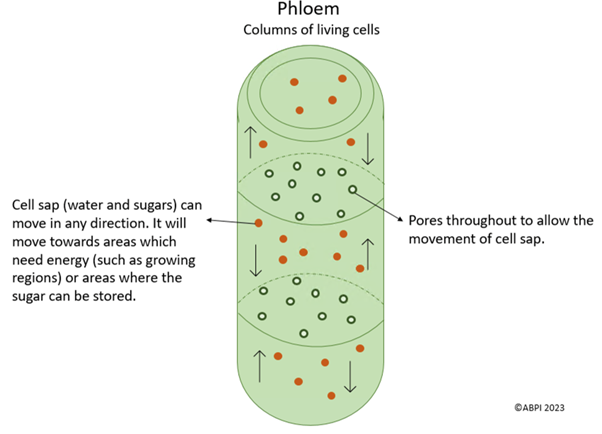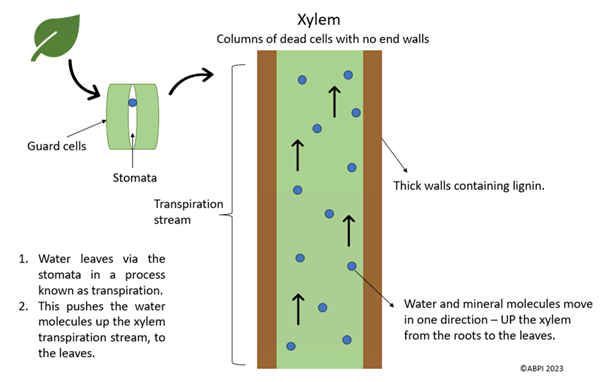This topic takes on average 60 minutes to read.
There are a number of interactive features in this resource:
 Biology
Biology
 Science
Science
Like animal cells, plant cells also form tissues that, in turn, form organs. In the case of plants, these organs include the stem, roots and leaves, each comprised of various tissues.
Plant tissues include:
The role of the xylem and phloem in transport:
Phloem:

The phloem facilitates the movement of cell sap (water and sugars) in any direction, to areas where it is needed. The sugars (which are the products of photosynthesis) are either stored or used as energy. This process is known as translocation, and it is an active process (meaning that it requires energy).
The phloem is made up of columns of living cells which have sieve plates (which contain pores) at the ends.
Xylem:

Stomata, found on the underside of the leaf, control the movement of water and gases into and out of the leaf. This is orchestrated by the guard cells, which control whether the stomata are open or closed depending on the conditions.
When water exits through the stomata, this is known as transpiration. As transpiration occurs, more water is drawn up the transpiration stream (through the xylem). This process does not require energy.
The rate of transpiration is controlled by: